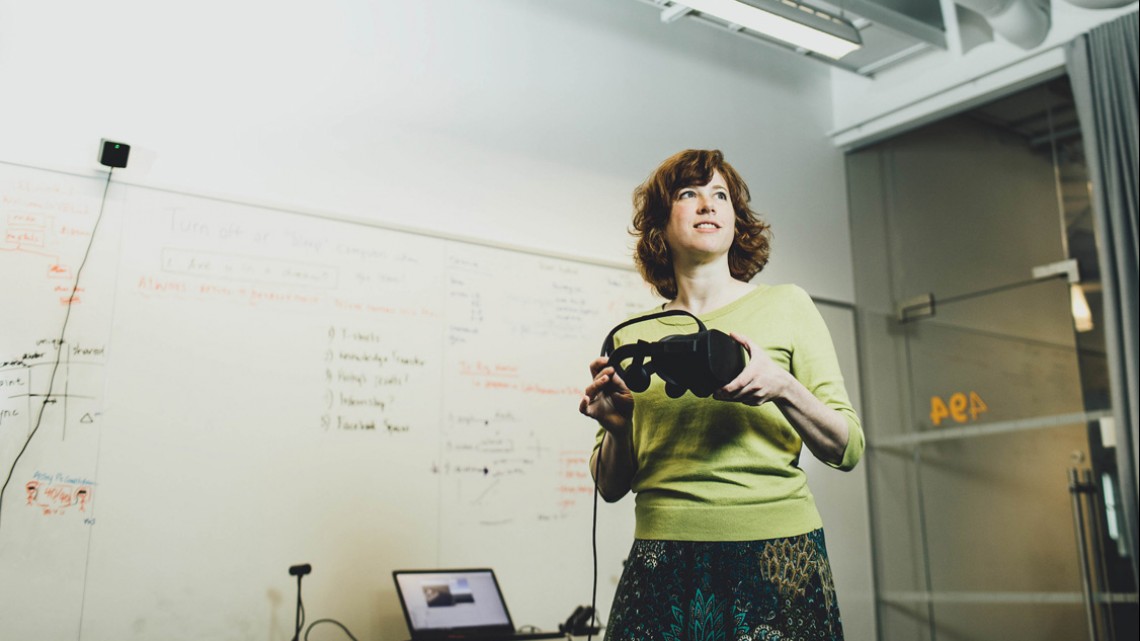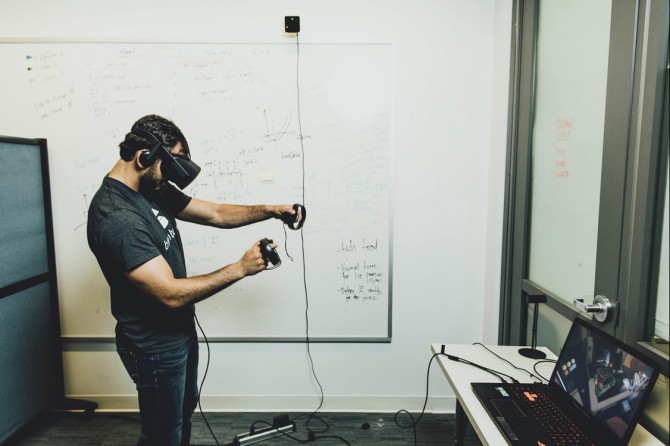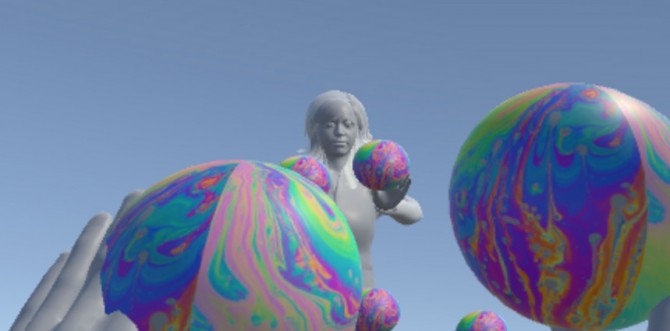
Andrea Stevenson Won, assistant professor in the Department of Communication, in the Virtual Embodiment Lab.
Relieving real pain in a virtual world
By Jennifer Savran Kelly
We’ve all enjoyed losing ourselves in a good book, but what if the story could change our lived experience? It may sound like science fiction, yet Andrea Stevenson Won uses a similar concept to study how immersing people in virtual reality (VR) can treat real-life pain.
VR offers tantalizing hope as a way to relieve the anguish of physical and mental stress. For those dealing with acute pain, it can form a distraction for the mind. And for those suffering from trauma, it helps relive triggering situations in a supported way.
Won, assistant professor of communication in the College of Agriculture and Life Sciences, directs the Virtual Embodiment Lab, exploring how physical and social interactions in mediated environments affect people’s perceptions. “I’m interested in the idea that you can transform your movements – see yourself doing something other than what you’re actually doing in real life – and this could help relieve chronic and acute pain,” says Won.
Pilot studies in Won’s lab in collaboration with clinics at Stanford University have shown promising results. Her research on chronic pain has previously examined two types of afflictions:complex regional pain syndrome, an uncommon form of chronic pain that typically develops after an injury, surgery, stroke or heart attack but that is out of proportion with the severity of the initial injury;and persistent idiopathic facial pain,a similar condition that occurs in the face.
Both of these maladies could potentially be addressed by giving patients what they would receive under normal conditions: visual feedback on their actions. Using VR, patients can see themselves moving in ways they can’t in real life, and their brains use that feedback to recreate their body image. According to Won, this “bogus” visual feedback can effectively change the way people with chronic conditions, such as neck pain, move. By tricking the brain with virtual experiences, the results could prompt lasting relief in the real world.
Won has modeled her VR-based approach on V.S. Ramachandran’s concept of mirror visual feedback,developed in the mid-1990s to help people cope with phantom limb pain, particularly in cases where they felt an amputated arm or leg was stuck in an uncomfortable position. The reflection of an existing hand or leg fooled the patient’s brain into thinking that its missing counterpart was moving and, therefore, becoming unstuck.
Today, VR treatments for pain intervention as well as for trauma and post-traumatic stress disorder have likewise proven to be successful. Together with increasingly accessible technology and lower price tags, that success has inspired more researchers to explore ways to treat myriad conditions.
“For better or worse, our experiences change us,” says Won. “As VR becomes a more common experience, there are more opportunities to use the technology to benefit our health.”
Jennifer Savran Kelly is a writer for the College of Agriculture and Life Sciences.
Media Contact
Get Cornell news delivered right to your inbox.
Subscribe


